Storefront for Art and Architecture is turning 40 this year. The New York institution’s new exhibition, Public Space in A Private Time: Building Storefront for Art and Architecture, commemorates the occasion by displaying materials from Storefront’s archive from 1982—when it was founded by Kyong Park and R.L. Seltman—to the early 2000s. The work included is from a diverse group of artists and architects including Nam June Paik and Jean-Michel Basquiat. But more than simply being a display of work, the exhibition highlights what an integral role Storefront has played in the city’s urban history and, perhaps unintentionally, how that role and the possibilities that it once offered have diminished over the past years, with the changing urban and political landscape of New York.
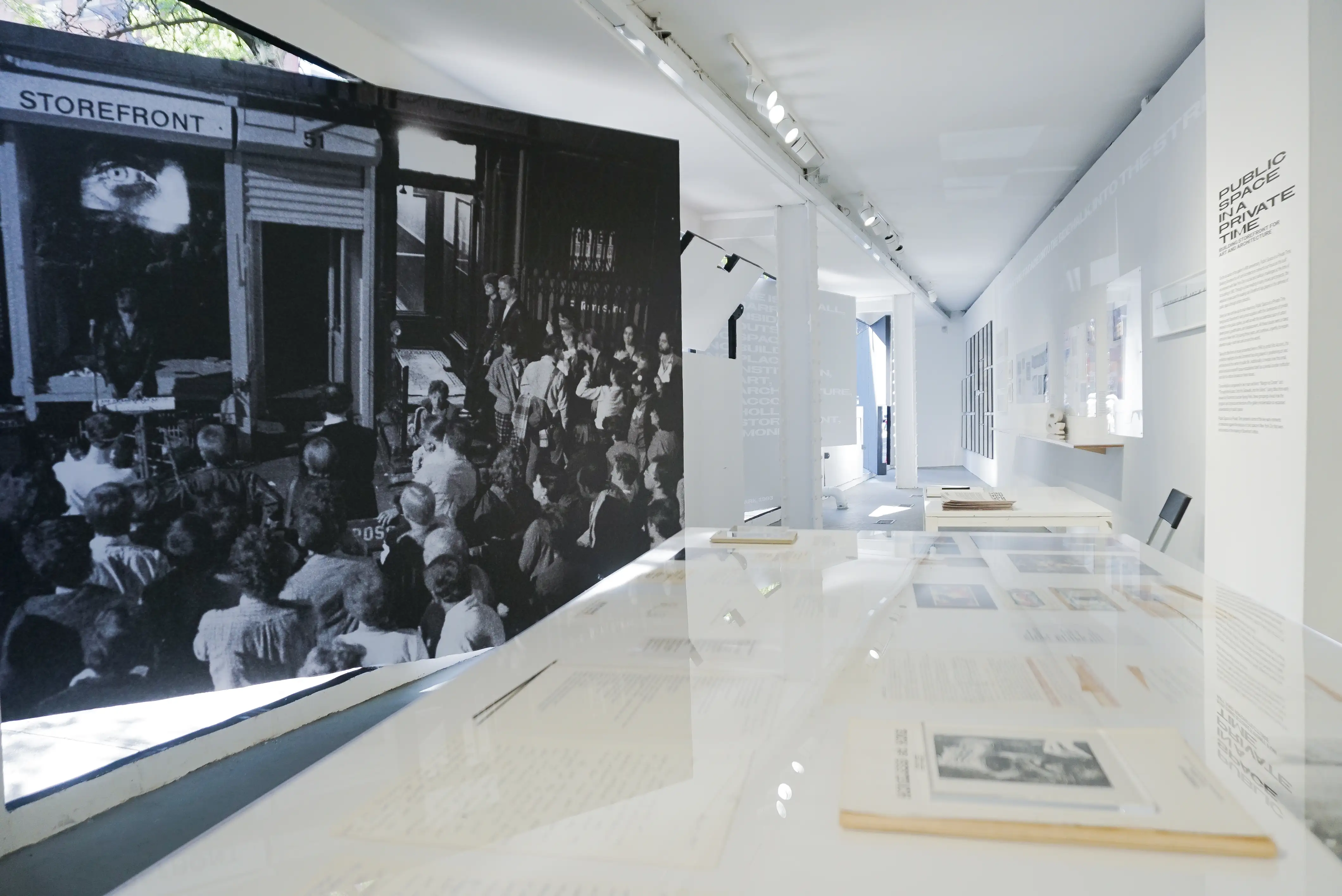
Public Space in a Private Time is on view until December 17, 2022. Photo by Andrea Molina Cuadro, courtesy Storefront for Art and Architecture
For the exhibition, Storefront’s minute, irregular corner space at 97 Kenmare, just east of SoHo, is filled with posters for former shows from architects like Lebbeus Woods and Coop Himmelblau; booklets of text; and a collection of personal effects, like handwritten notes and photographs. The sheer number of names and associations is almost overwhelming. Even the first show, which opened on September 17, 1982, featured 26 consecutive nights of performances by such avant garde artists as Carolee Schneeman, Arleen Schloss, and Teching Hsieh.
In a photo taken on the inaugural night, a crowd spills out from Storefront’s former location at 51 Prince, a few blocks away, overtaking the sidewalk. The image is more than just a document: it represents Storefront’s ethos as a community-driven space—a community that included non-profit collaborators; artists and architects; and the crowd itself. It’s a representation of what Vito Acconci who, along with Steven Holl, designed Storefront’s current moveable façade in 1992, meant when he said, “The gallery, like the street, [is] not a mode you stop at but a circulation route you pass though.”
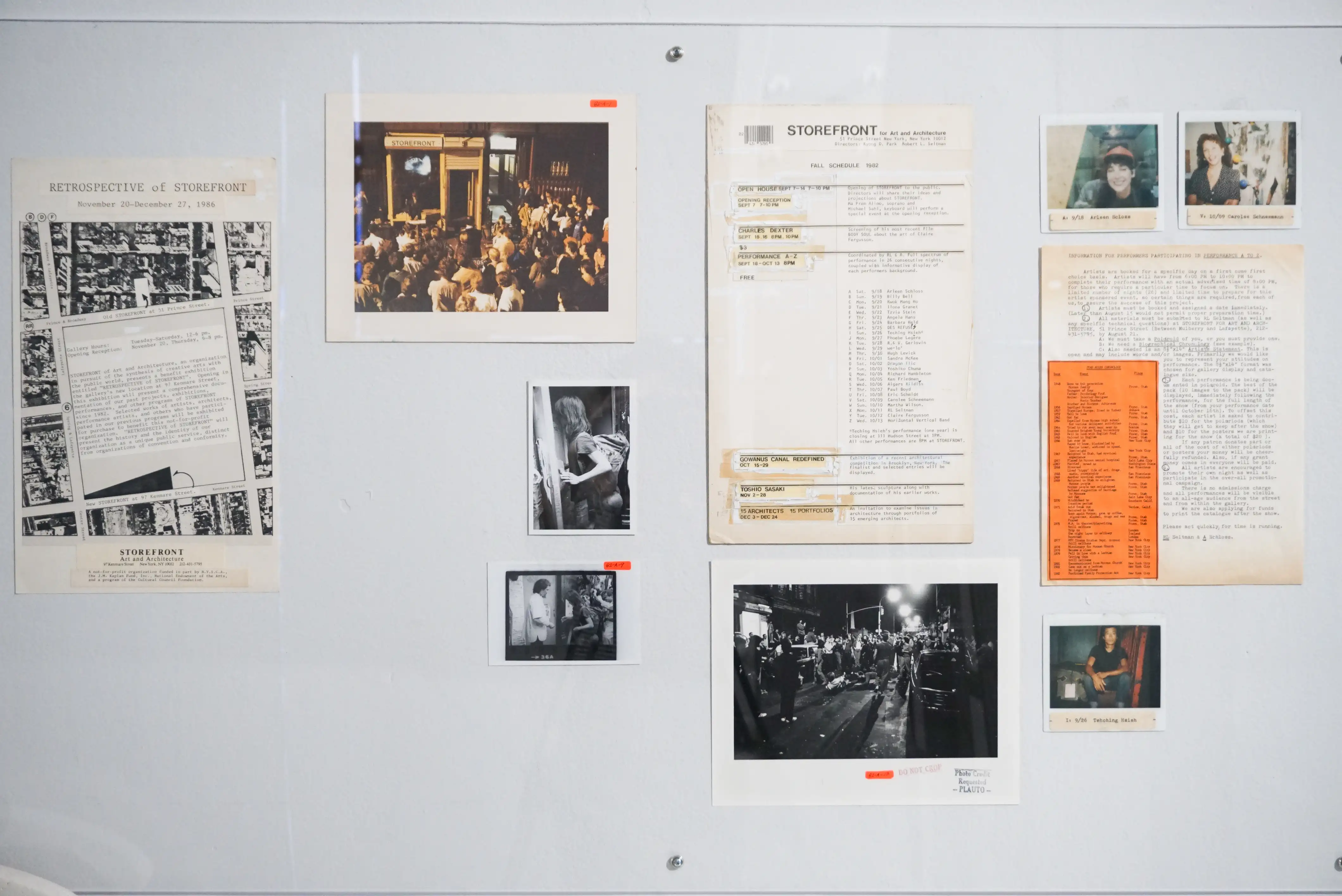
1
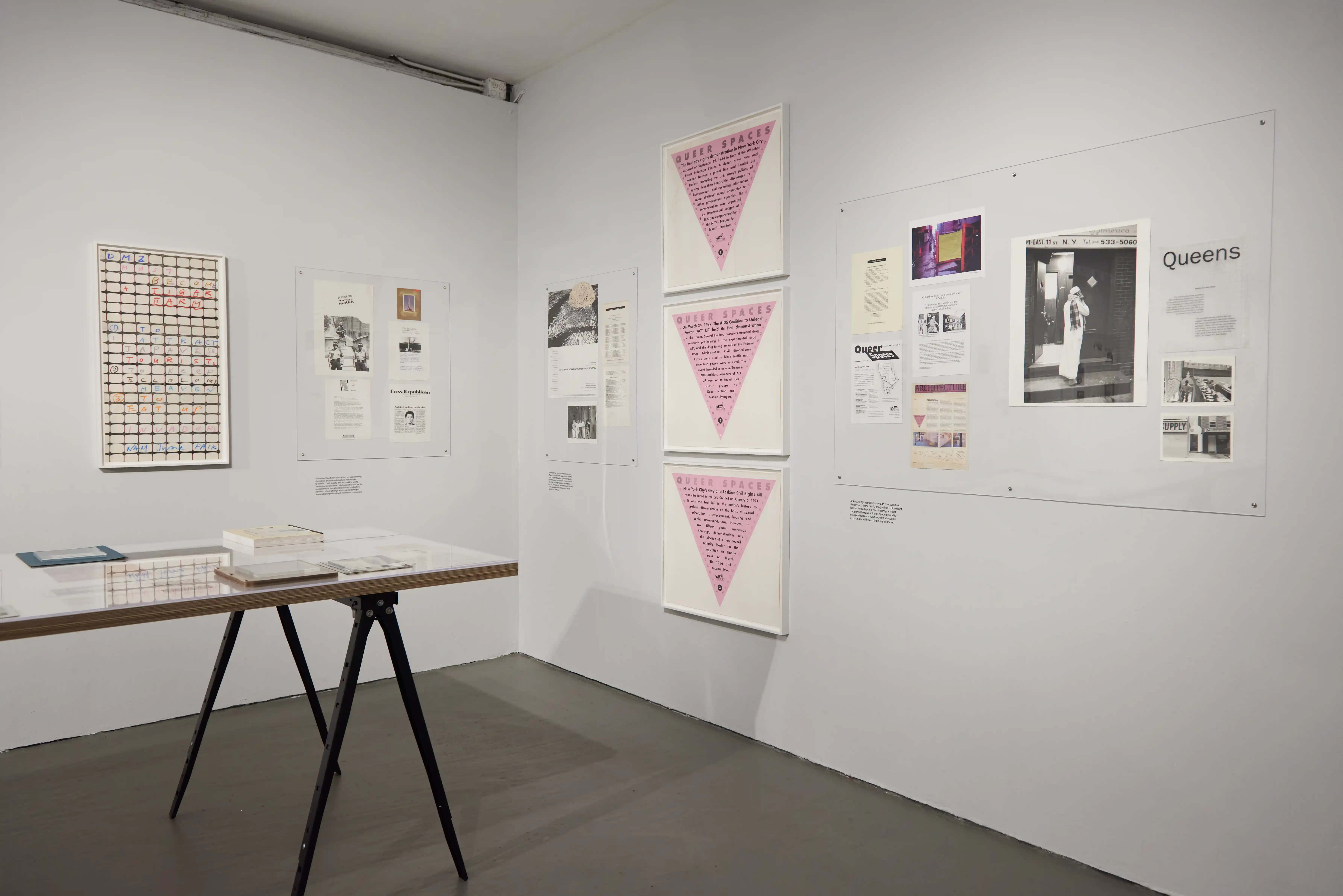
2
Installation images showing (1) photos of crowds outside the original Storefront location in 1982 and (2) exhibition material from the 1994 exhibition Queer Space. Photos by Andrea Molina Cuadro (1); Michael Oliver (2), courtesy Storefront for Art and Architecture
Storefront was created, in part, to shine a light on the struggles of progressive artists and designers, as increasing privatization and soaring rents were having a serious impact on the ability of those artists and designers to work. Aside from simply being a respite within a chaotic landscape, for Storefront, being part of the community has always meant engaging in the difficult discussions on issues around dislocation and gentrification. It’s a form of engagement that is represented in the type of architecture Storefront displayed, which was often speculative. For a 1992 show that focused on a potential redevelopment of the Whitney Museum, the artist Christo proposed wrapping in fabric the Museum’s then-location, the Marcel Breuer building on Madison Avenue. From 1992 to 1995, Storefront held an annual international conference, ECO-TEC, on design, ecology, and architecture that featured contributions from architects like Neil Denari and Mark Wigley.
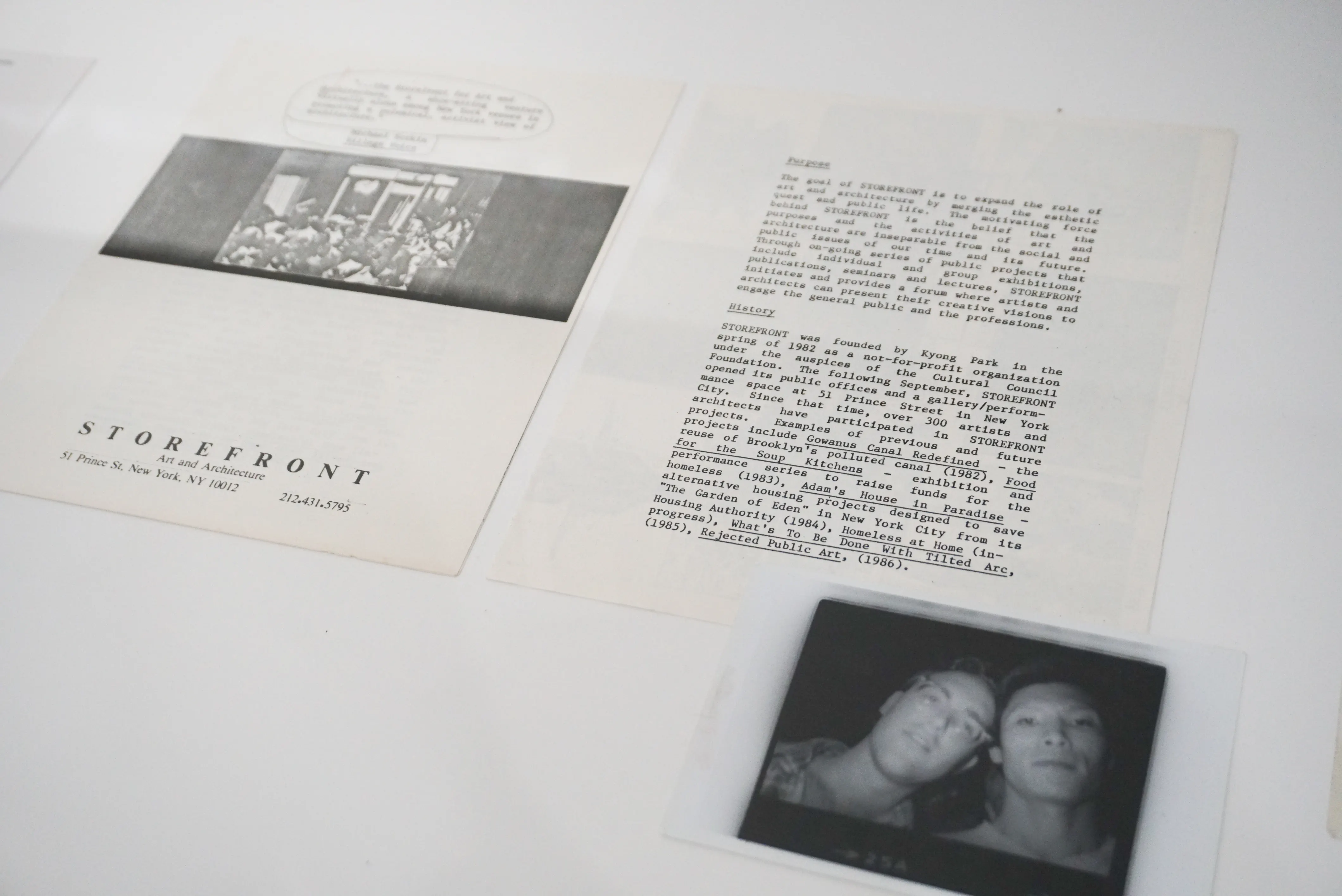
Photograph of Park and Seltman (1982) alongside drafts of the Storefront's mission statement. Photo by Andrea Molina Cuadro, courtesy Storefront for Art and Architecture
Yet it is that community-driven aspect that makes Public Space in A Private Time a somewhat difficult exhibition. As impressive as the show is, it points to just how much has been lost in New York, and particularly downtown, since Storefront’s inception. Today, it would be nearly impossible to pull together such a community as Storefront once did. Community means, at least in part, shared goals, and an openness and willingness to engage. But these elements are hard to come by when merely existing financially or artistically in New York is a Sisyphean struggle. In many ways, Storefront is a victim, too, of the forces that changed a progressive cultural era in lower Manhattan and turned a once-gritty, thriving bohemian hub to a generically rich neighborhood, dotted with boutiques and luxury apartments. Were it not for the financial contributions of Storefront’s community and the grants it receives as a non-profit, the small institution likely would not have been able to survive.
But Storefront is still here and its history is impressive. And even if many of the former institutions—such as Fashion Moda—with which it once collaborated are long shuttered, it perseveres within a more difficult context today. Storefront’s history is a true form of inspiration for other institutions and suggests a myriad of possibilities for a way forward.



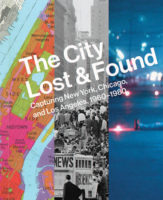
Post a comment to this article
Report Abusive Comment